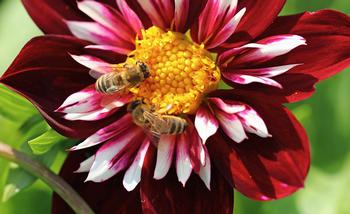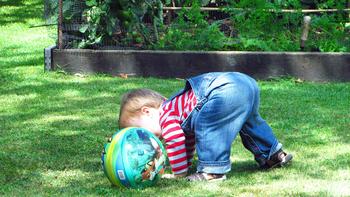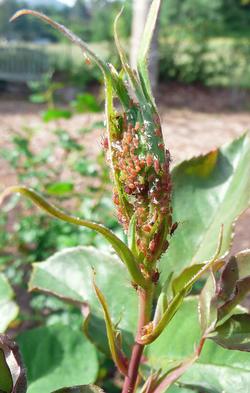Skip the chemicals
-
Nanette Londeree
-
Out on the deck getting ready for a family gathering, you admire your picture-perfect garden – the weed-free emerald-green lawn is surrounded by beautiful roses without an aphid in sight, and vegetable beds are filled with big juicy-looking tomatoes on spotless plants if this perfection was achieved without the use of chemical fertilizers and pesticides, bravo! If, on the other hand, you’ve lent nature a hand using weed and feed products on the lawn or “all in one” treatments that fertilize your flowers and vegetables while controlling insects and disease, then you might want to re-think how you use your outdoor space. In addition to synthetic fertilizers, those multi-purpose products contain pesticides that can potentially negatively impact your children, pets, wildlife, and the environment.
 Systemic insecticides move inside plants potentially reaching pollen that can be picked up by honeybees and taken back to the hive. Photo: pxfuel
Systemic insecticides move inside plants potentially reaching pollen that can be picked up by honeybees and taken back to the hive. Photo: pxfuelFertilizing is the addition of nutrients to the soil. Plants growing in the wild get their nutrients from air, water, soil minerals, and organic matter - fallen leaves, plants, microbes, and animals that die and decompose. This process improves the overall health of the soil while slowly releasing nutrients. Adding organic matter to your soil accomplishes the same thing.
The most widely available fertilizer products are synthetic. Manufactured or refined from natural ingredients to make them more concentrated, they are in forms that are immediately available to plants. Generally high in salts and harmful to soil microbes, this form produces lush, vigorous growth that encourages insect pests and disease problems. Fertilizer products may also have pesticides added to them – herbicides (weed killers), insecticides, and fungicides, for “protection” of the plant from pests and disease.
Weed and feed products are usually applied across the entire surface of the lawn. Tiny particles contain fertilizer and weed killers that slowly break down, releasing the chemicals. For a period of time after application, the pesticides used on lawns can inadvertently be ingested by your pets or kids. Whether it’s your dog wiggling on the lawn, then licking his fur, or your baby daughter playing with toys on the grass, then sticking them in her mouth, unwittingly, both can swallow a minute dose of pesticide. Weed and feed products for the lawn may expose your child to harmful pesticides. Photo: PxHere
Weed and feed products for the lawn may expose your child to harmful pesticides. Photo: PxHereMulti-purpose, “all in one” type flower, fruit, and vegetable care products contain chemical fertilizers and systemic pesticides that circulate through the plant to prevent disease or kill any pest that may consume it. Picture liquids moving through an entire tomato plant, from roots to tips of the leaves, and transporting the pesticide right into the developing fruit or traveling through the plant to a favorite flower, where it may be picked up by bees in pollen laced with the potential toxin and then taken back to the hive to contaminate it. Designed for the gardener’s convenience, multi-purpose products add unnecessary pesticides to your garden whether you need them or not. It’s like taking an antibiotic every day just in case you might get an infection.
Can you still have a good-looking garden and reduce or, even better, eliminate the use of toxic chemicals? You sure can by using some Earth-friendly gardening basics. The lawn and other plants may not look picture-perfect, but your garden will be much safer for all that inhabit it. Lush growth from chemical fertilizers can actually be an attractant to aphids. Photo: Nanette Londeree
Lush growth from chemical fertilizers can actually be an attractant to aphids. Photo: Nanette Londeree- Add organic matter to your soil to provide essential nutrients for plants and habitats and food for diverse soil organisms.
- Cover the soil with an organic mulch to protect it, improve soil structure and fertility, and enhance the area’s overall appearance.
- Fertilize plants if and when needed; apply materials based on the soil test results. Most trees, shrubs, and perennials grow well without supplemental fertilizer.
- Use organic fertilizers and materials whenever possible.
- Adopt an integrated pest management (IPM) approach to prevent pests entirely or reduce them to levels you can live with.
- If pesticides are needed, choose the most selective pesticide that will do the job and be the safest for other organisms and for air, soil, and water quality.
For more information on fertilizing and Earth-friendly garden techniques, visit the Marin Master Gardener website at marinmg.ucanr.edu.



